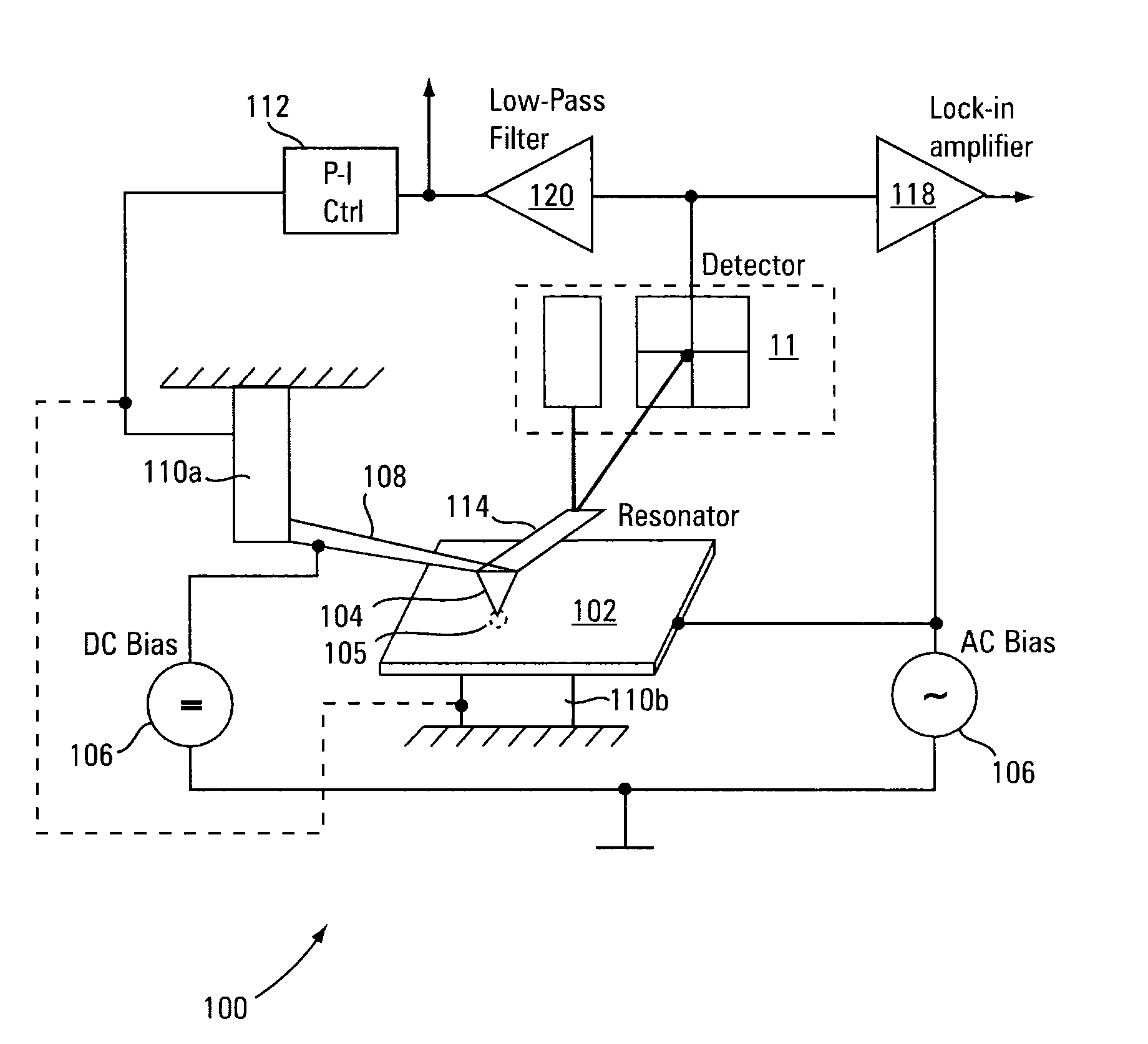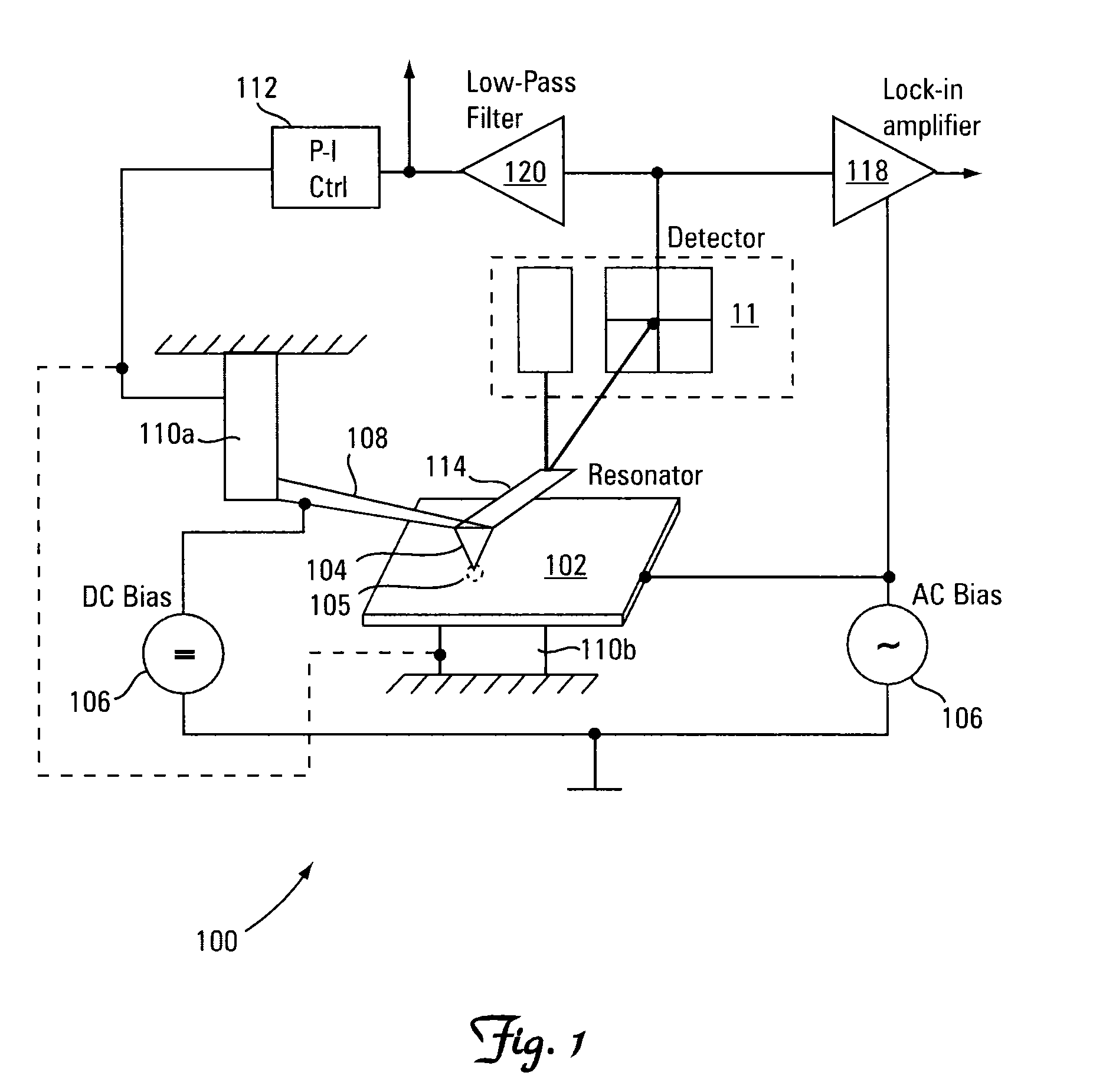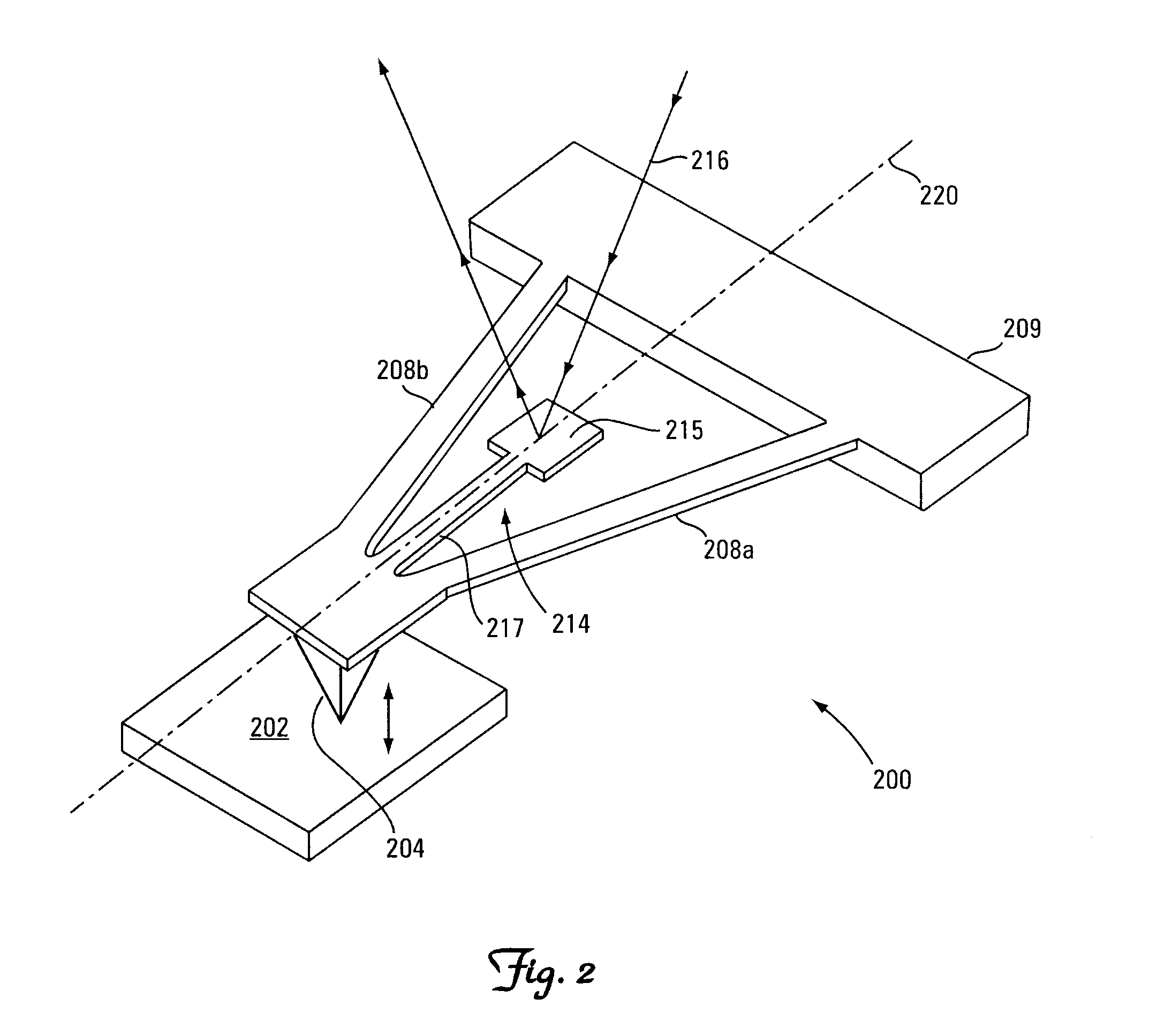Preamplifying cantilever and applications thereof
a cantilever and preamplifying technology, applied in the field of scanning probe microscopy, can solve the problems of limited measurement accuracy, poor signal-to-noise ratio (snr) of conventional pfm, and difficult measurement of materials exhibiting high repolarization sensitivity to stimulus signals using conventional techniques
- Summary
- Abstract
- Description
- Claims
- Application Information
AI Technical Summary
Benefits of technology
Problems solved by technology
Method used
Image
Examples
Embodiment Construction
[0035]One aspect of the invention is directed to a preamplifying cantilever design that is specifically adapted for enhancing measurement of surface motion of an actual material being subject to actuation that causes the surface motion. Further aspects are directed to techniques featuring the use of mechanical preamplification in the cantilever. Piezoresponse force microscopy (PFM) is one class of scanning probe microscopy (SPM) techniques that create and measure such surface motion and, for the sake of simplicity, the following description features embodiments utilizing that type of application as a representative example of the context in which the principles of the invention can be applied. However, the inventors contemplate applying the principles evident from these embodiments to other, related areas of scanning probe microscopy, in which benefits provided by aspects of the invention may also be applicable. For example, the invention may be applied using any of a variety of tec...
PUM
 Login to View More
Login to View More Abstract
Description
Claims
Application Information
 Login to View More
Login to View More - R&D
- Intellectual Property
- Life Sciences
- Materials
- Tech Scout
- Unparalleled Data Quality
- Higher Quality Content
- 60% Fewer Hallucinations
Browse by: Latest US Patents, China's latest patents, Technical Efficacy Thesaurus, Application Domain, Technology Topic, Popular Technical Reports.
© 2025 PatSnap. All rights reserved.Legal|Privacy policy|Modern Slavery Act Transparency Statement|Sitemap|About US| Contact US: help@patsnap.com



